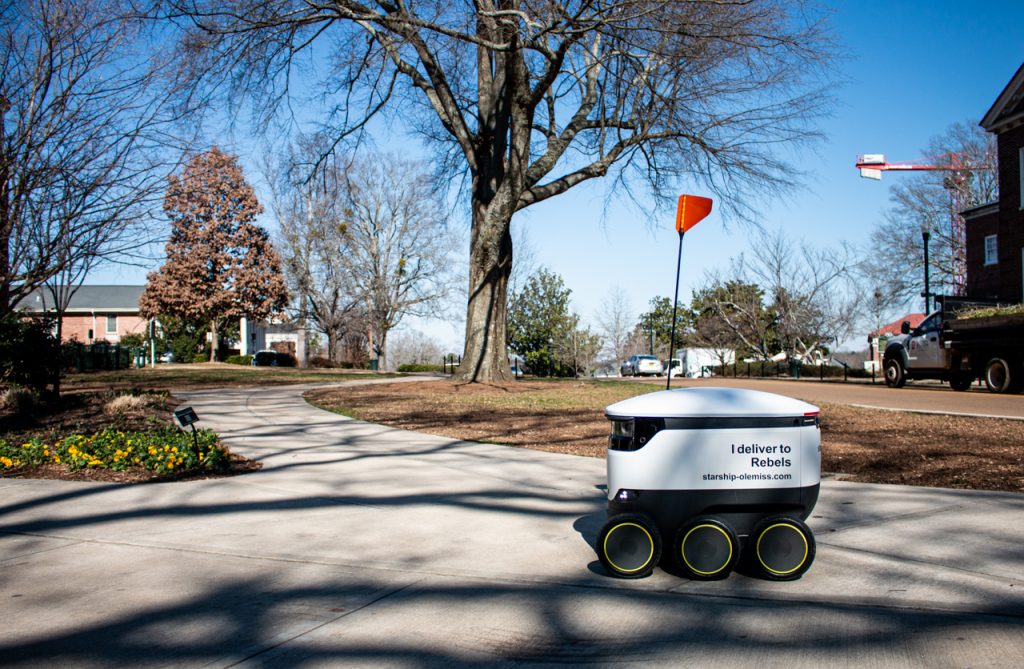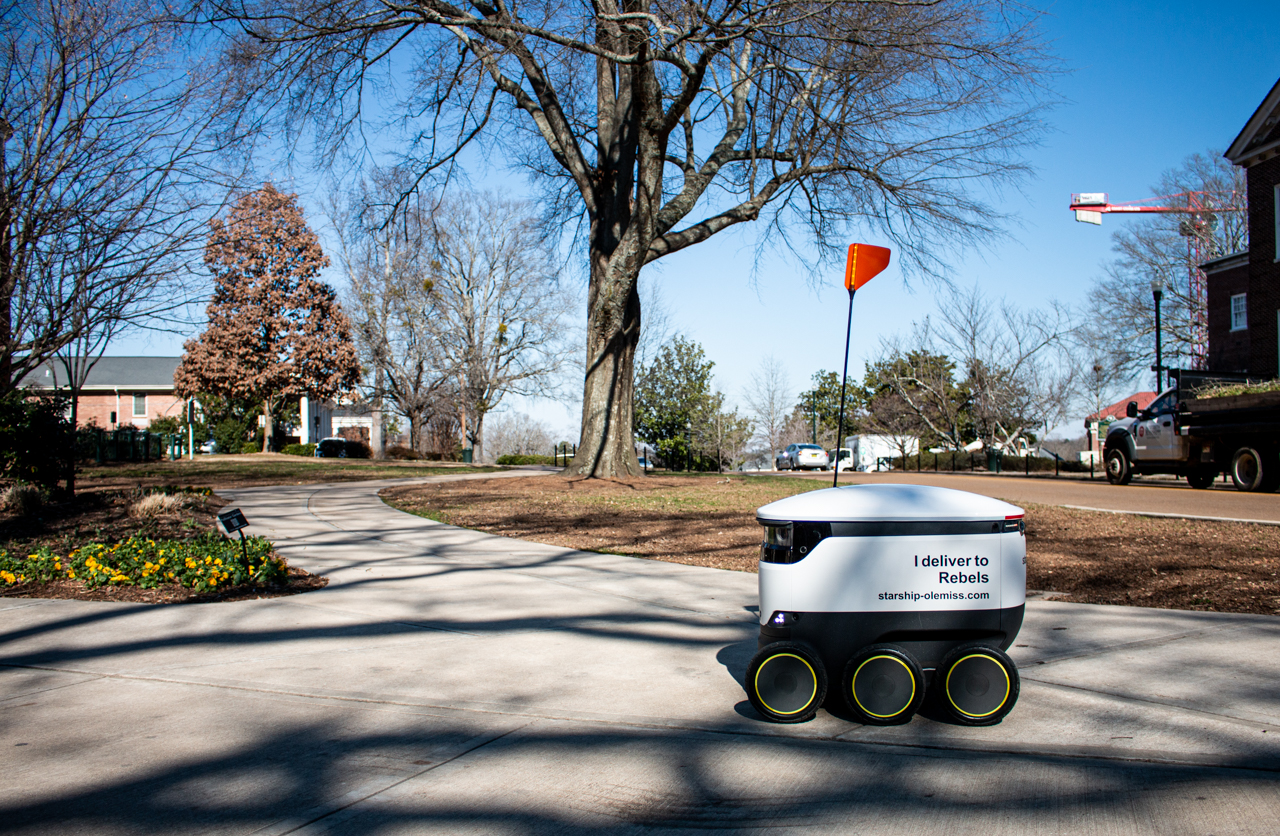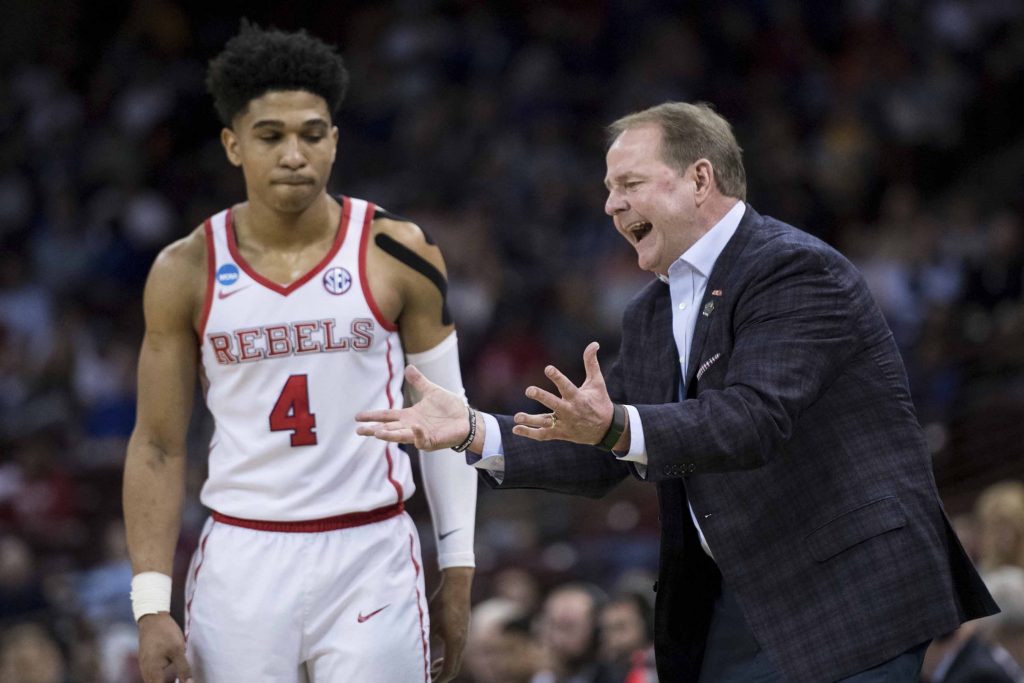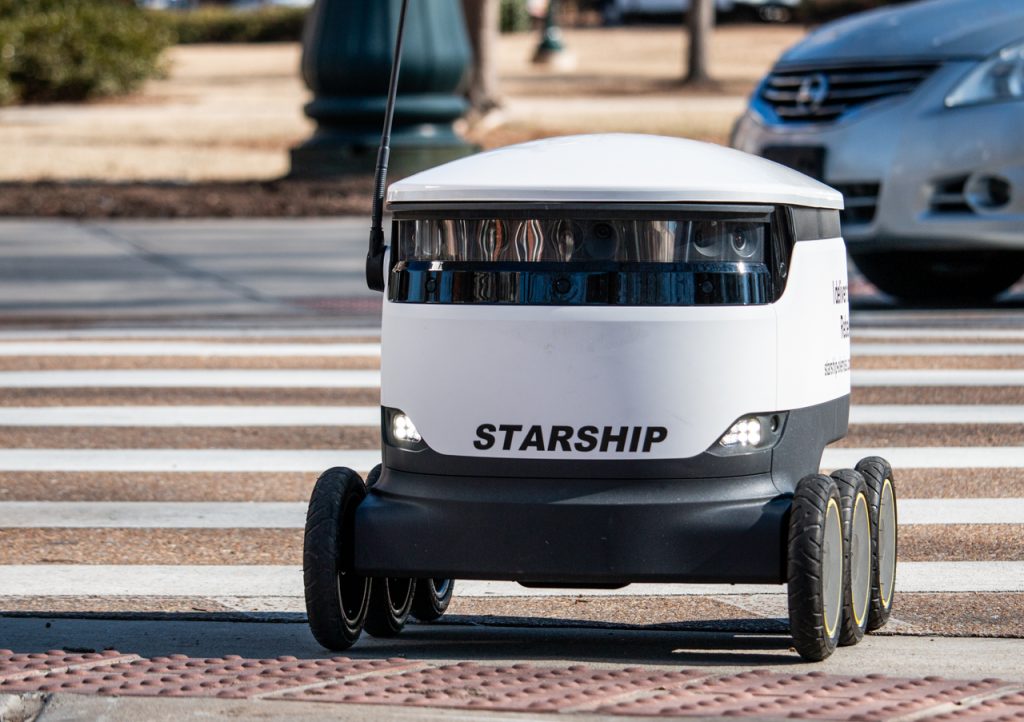
The robots that have roamed campus for the past few weeks are officially beginning their food delivery service today. A lot of factors – keeping delivery costs down, making the robots travel efficiently and protecting them from the elements – went into creating the robots that now roam the Ole Miss campus.
Starship Technologies, the company that provides the delivery robots for the university, worked to make the robots cost-effective to cut food delivery costs. Light Detection and Ranging (LIDAR) sensors, typically used to maneuver autonomous robots, were out of the question.
Instead, the robots rely on neural networks to navigate the world.
Starship’s neural networks rely on data gained by radars, cameras and ultrasonics. This data is then processed by the neural networks. Instead of programmers writing the code manually, the neural networks “learn” and write the code.
When training the robots to travel, programmers must be careful to account for all situations. Potential issues include cars being spotted in mirrors or a robot seeing a motorcycle for the first time.
Architectural engineering can help with some of these issues. If the robot can put an object into its global context, it can determine if the path in front of it is a sidewalk or a road.
Solving problems with the robots can be tricky. For one, the issues of space and cost restraint can cause engineering problems. Batteries, data storage and sensor calibration have to be carefully engineered to optimize performance and keep costs down.
Bugs in the software can be extremely difficult to fix. In addition to the large amount of data involved in training the robots, there is the problem of deciding which solutions to implement. One solution could optimize the average performance of the robots, but it would decrease their ability to function in sunny weather.
Despite the complexities of the robots, they have been successful in multiple cities and in multiple weather conditions – including snow, rain and ice. Right now, Ole Miss has robots all over campus. Today, you’re able to get deliveries from them.
















